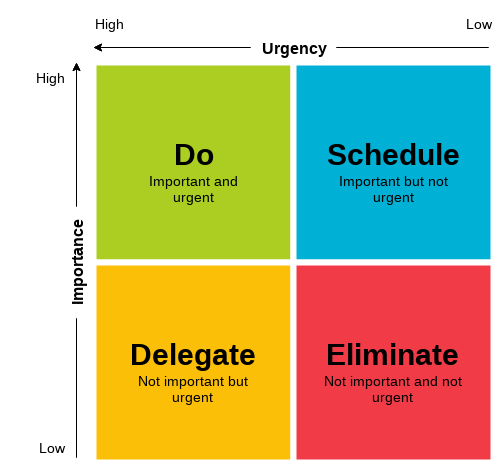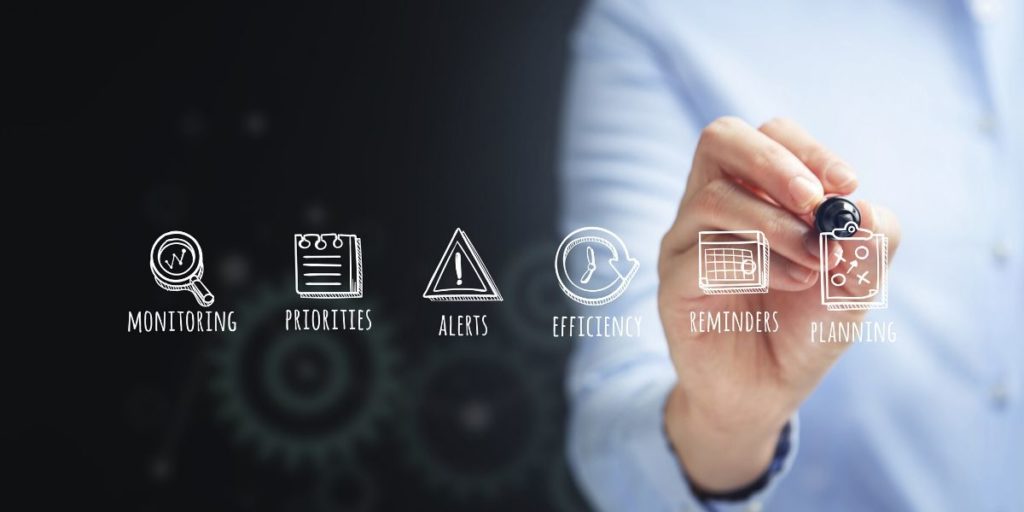Career Advice
9 Strategies to Achieve Work Life Balance

“The Pandemic Workday has Obliterated Work Life Balance,” declares this Bloomberg headline.
With the massive shift towards remote work brought about by Covid-19, it’s become way more challenging to draw a line between work and personal life.
But it doesn’t have to stay this way.
You can achieve a healthy work-life balance by being ruthless with your priorities and regaining control of your time.
Use these 9 strategies to take charge of your life.
- Evaluate your current work and lifestyle
- Prioritise your tasks and time
- Do it like Jeff Bezos
- Ask for help
- Learn to say no – establish boundaries!
- Plan tasks in advance, then set fixed working hours
- Plan exercise and personal time
- Switch off after work
- Get sufficient sleep
How to Achieve Work Life Balance: 9 Strategies
1. Evaluate your current Work and Lifestyle
First, review, assess and evaluate how you currently spend your time, both in your work and personal life. Determine which activities you can reduce or eliminate.
a) Track where the bulk of your time goes by asking yourself these questions:
- What are the 3 to 5 most time-consuming main activities you do each day?
- Do these activities add value to your life and give your life meaning?
- Are these important tasks that you absolutely have to do?
- Do you desire to spend less time on these activities?
b) After identifying your biggest unnecessary time-guzzlers or hated tasks, think about how you can optimise your tasks and time and work smarter.
- Can you tweak your workflow to achieve more within less time?
- Can you delegate or outsource these tasks?
- Are there any productivity tools or technologies that can help to complete administrative tasks?
2. Prioritise your tasks and time
After culling the activities that you hate, or that add little value to your life, you’re left with tasks you absolutely must do.
Here’s a trick.
Work-life balance isn’t about whittling down your to-do list down to as few tasks as possible.
The secret to contentment lies in prioritising your time.
Everyone has the same 24 hours in a day. Prioritising is how some people get more done in a day than others do.
But how do you determine which tasks to do first, and which tasks to spend more or less time on?
Use the Eisenhower Matrix.
What is the Eisenhower Matrix?
The Eisenhower Matrix is a handy 2 by 2 grid that prioritises tasks according to two metrics: Urgency and Importance. It’s named after American President Dwight Eisenhower, who designed this method of prioritisation.
What’s the difference between Urgency and Importance?
- Urgent tasks must be completed in the short-term, due to upcoming deadlines. This includes administrative tasks.
- Important tasks are longer-term tasks that may not have a set deadline, but are more significant in nature. They contribute to your overall career aspirations, goals and personal development.
Split your to-do list up into tasks that are important, urgent, or both. Complete them in this sequence:
‘Important and Urgent’ activities (Do these first!)
‘Urgent but Not Important’ tasks
‘Important but Not Urgent’ tasks
‘Not Urgent and Not Important’ tasks (Should be avoided or outsourced if possible.)
By using this method to sort your to-dos, you can complete urgent tasks in time for your deadlines, while still devoting time for important tasks that may not have a fixed deadline.
You’ll get the most out of every minute, and enhance your quality of life.
3. Do it like Jeff Bezos
Here’s another tip – do like Jeff Bezos.
Jeff Bezos has a surprisingly relaxed work day. The world’s richest man expects himself to make only 3 good, but high quality, decisions a day.
Why? He knows that as the day drags on, fatigue wears us down and affects our decision making abilities. So he gets his toughest tasks done before lunch time.
We don’t all manage trillion dollar corporations, so the stakes aren’t that high for us. But we can learn from Jeff’s work methodology.
Aim to complete only 3 important and urgent activities each day.
Ask yourself – “If I only have time to complete 3 things today, which 3 tasks should I do?”
Eliminating your other tasks and decisions ensures you have the bandwidth to focus only on these 3 tasks, and deliver a higher quality of work.
Finally, complete 1 thing at a time.
Tune out distractions and noise, Quell your anxieties about the laundry list of activities you still have to do.
Remind yourself: the more focused you are on completing just one task, the faster you’ll finish it, and the sooner you can move on to the next item.
You’ll cross items off your checklist more quickly than you think.
4. Ask for Help
If tedious tasks are occupying the bulk of your day, and sapping your energy, try asking for help, or even consider outsourcing.
Is your teammate more experienced than you at a certain task? Or does a colleague enjoy a specific job function that you loathe? Can you groom and train your subordinate to take on higher level responsibilities?
Don’t be shy to outsource or seek help.
Asking for help isn’t a sign of weakness.
Often, it’s the smart and best thing you can do for yourself and your team. And it’ll help you better manage work stress.
5. Learn to Say No – Establish Boundaries!
Establish professional boundaries. Be fiercely defensive of your personal time.
Do this by learning how to say no.
Employees often feel pressured to say yes.
You might think the consequences of saying no are severe:
Others could develop a poor impression of yourself. You may be seen as someone who shirks responsibility. You might be passed up for promotion. Your client won’t feel your TLC.
But you can say no while being reasonable and respectful. Here are a few nifty techniques.
- Don’t say no without an explanation: “I can’t do this, I’m too busy” or “Sorry I have no bandwidth” doesn’t cut it. Doesn’t it sound like an immediate shut down to someone’s request? Try this instead: “That sounds like a great opportunity! Unfortunately, my plate is full at the moment with X and Y tasks assigned by so-and-so director. He needs these tasks completed by this Friday. Could we pick up on this next week instead?”
- Respect the client or the project: Give a suitable rationale, such as: “I want to ensure that this is completed to our highest standards. Could we extend the deadline for this project by 3 days? I wouldn’t want to rush through it at the last minute, and present slipshod work to you.”
- Be honest: Or try: “I would love to take this on, but I’m presently covering for another colleague while he’s on leave. Could we put this on hold for now? Once my colleague returns, I’ll come back to you on this immediately.”
Say no to manage your workload better, and regain time for yourself.
6. Plan Tasks in Advance, then Set Fixed Working Hours
You’ve prioritised your tasks. Now it’s time for you to schedule them in advance.
Estimate the time needed for these tasks, and plan them at fixed time slots.
You are probably aware that you perform better at certain timings in a day. Conversely, you can also identify your lowest-performance times.
Assign high-value tasks, or tasks that require extensive focus, to these high-performance time slots. Allocate administrative or routine work to low-performance timings.
You’ll then be able to maximise your productivity within this fixed window of time, leaving you more time to pursue other activities outside of work.
7. Plan Exercise and Personal Time
With that said, don’t forget to plan your personal time!
Be intentional about how you spend your downtime, and ensuring that you take it. Don’t sacrifice personal time too frequently for work.
Scheduling personal time on your calendar helps ensure that you’ll never miss it.
Devote a set number of hours for your personal pursuits, whether that’s a hobby or exercise after work, family time, reading, or catching up with friends.
8. Switch Off After Work
Once you’re outside of work, make a conscious effort to switch off from work.
Frequently checking your emails and responding to them outside of work isn’t healthy. Neither is constantly poring over an unresolved task or work issue.
If anything, it’ll sap you of your energy.
You need this time outside of work to rest, recover and recharge, so you can return on your next work day ready to tackle your toughest problems.
9. Get Sufficient Sleep
A fundamentally important component of recovery – get enough sleep!
A good night’s rest sets you up for success and optimal productivity the next day.
If you’re struggling with getting sleep, again, it boils down to one thing: being ruthless with your time.
Carve out 8 hours for sleep each night, at a fixed time slot. An hour before that, put away your electronic devices and relax with a book, journaling or meditation, so you’ll be in the right frame of mind for a restful sleep.
Conclusion
Work life balance sounds like a luxury, especially in today’s hyper-competitive, always-on professional environment.
The transition to remote work has undeniably upset this balance further for some working professionals – working from home blurs the boundaries between our homes and the workplace even more.
But is work life balance still a futile pursuit?
We don’t think so.
It’s all about how you perceive time, how you prioritise it, and what you do with it.
For example, have you ever fallen into that rabbit hole of Netflix binge watching? Most of us have done this at some point.
Sure, it’s perhaps relaxing and entertaining. But with that time, we could have done something else that’s equally relaxing, and less mind-numbing. Those 3-4 hours spent on Netflix? That’s lost time, that could have been put to better use.
We can obtain better work life balance. We just have to be ruthless with our time. Work smart, prioritise and plan before executing, and delegate or cut tasks whenever possible.
Soon, you’ll find yourself eking out more time for yourself, and enjoying a better quality of life.





